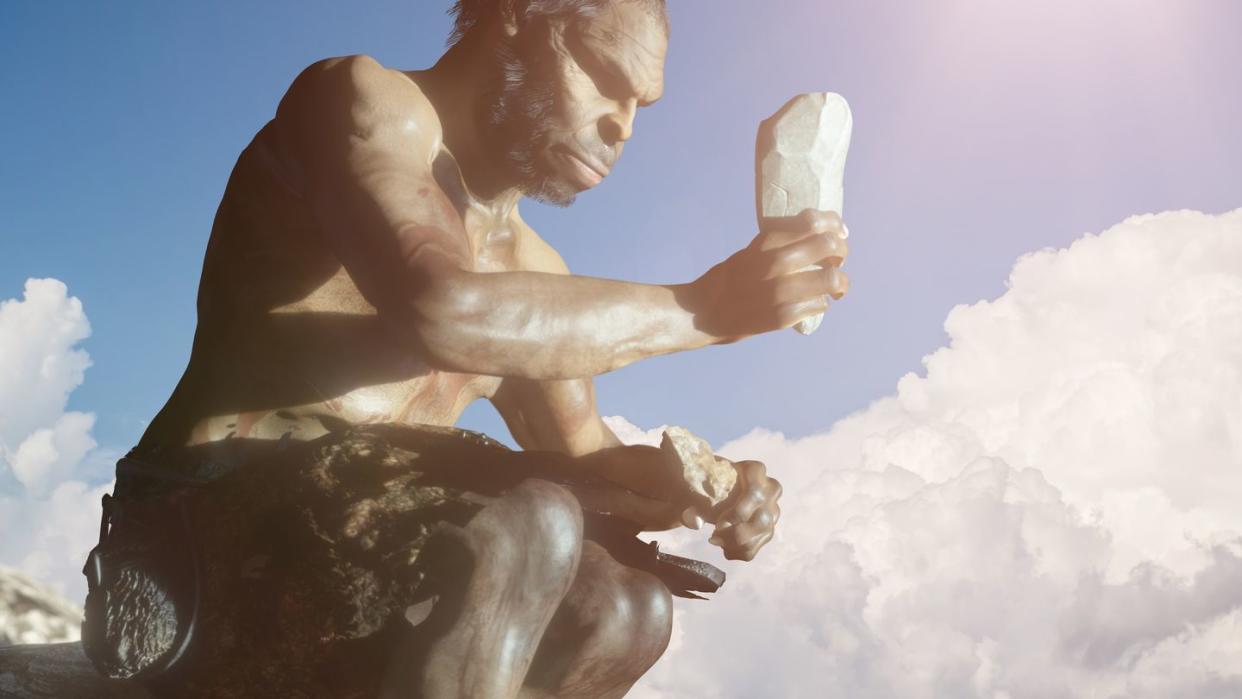A Scientist Says He Has Evidence That Ice-Age Humans Lived in Maryland 22,000 Years Ago

A researcher claims to have found evidence of humans in Chesapeake Bay over 22,000 years ago.
The assertion is yet another recent announcement claiming to push the arrival of humans in North America further back in time than previously understood.
Not everyone agrees with the dating technique used to determine human inhabitants.
Call it a discussion. Or a debate. Maybe we can even label the conversation around the arrival of humans to North America a downright disagreement. Either way, we’ve got a new batch of research to digest—largely independent geologist Darrin Lowery recently published a manuscript claiming stone tool artifacts embedded with charcoal from an island in Chesapeake Bay date to more than 22,000 years ago, during the Ice Age.
Already, we’ve seen the human-arrival-in-North America date pushed deeper into history. According to multiple researchers, archaeological finds in New Mexico’s White Sands National Park date human activity in the area to between 21,000 and 23,000 years ago. Lowery now believes humans were present in Maryland around the same time.
Following a non-peer-reviewed publication of his findings—Lowery told the Washington Post that “life’s too short” to debate with other experts over the peer-review process—he claims that the oldest of 286 artifacts found on Parsons Island significantly pushes back the date of human arrival in the area.
It all flies in the face of what has long been believed about how humans came to North America—the dominant theory being that humans used the Bering land bridge connecting Siberia and Asia to North America during the Ice Age, and moved south as ice melted and exposed routes of exploration. During the southward migration, scientists believe people left behind various fluted stone projectile points (known as a Clovis point, as the people group considered the first to come to the Americas were named for a town in Clovis, New Mexico).
Lowery tells the Washington Post that he found what he believed was a Clovis point—something he had seen on a Smithsonian television program—around his home near Parsons Island, Maryland as a 9-year-old. That piqued his interest in the region, and he has been focused on the 78-acre, privately owned island ever since.
Lowery and other geologists got permission to study the island from the owners, and have used 93 visits to the site for excavation and studying sediment to help determine the dating of the geological layers. What is now coastline wasn’t always, and the team believes they may have found a pond that helped attract both animals and people to the site, leaving behind the stone tools now in question.
Sebastien Lacombe, an archaeologist at Binghamton University, tells the Washington Post that the rapid erosion of the island is likely pushing artifacts deep into the waters of the bay, meaning we’ve likely already lost much of our opportunity to scour the site for additional finds.
From fresh research in New Mexico to the Parsons Island details, the updated perspectives don’t allow for the tidy history-book account of the Ice Age bridge from Siberia to be the full explanation of how we found our way to North America—if correct.
But that “if correct” remains the sticking point—some scientists claim that the dating techniques of these “pre-Clovis” sites aren’t reliable, and others believe in the dating techniques but simply don’t agree with anything that doesn’t conform to the Clovis theory. Still others are willing to discuss the intriguing find, even if questions remain. “The case is not as tight as we like to see it with other sites,” Steven Forman, a geoscientist at Baylor University who helped date the sediment layers at Parsons Island, told the Washington Post.
With so many of the artifacts now moving from their original location due to erosion, the “bulletproof geological context” is hard to find. But that won’t stop experts from looking, or from debating what they find.
You Might Also Like

